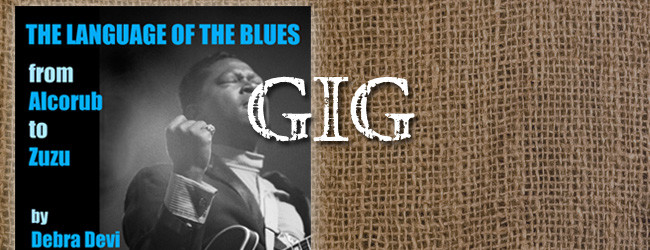Here’s the latest installment of our weekly series, The Language of the Blues, in which author/rocker Debra Devi explores the meaning of a word or phrase found in the blues. To learn lots more about what your favorite blues songs really mean, grab a signed copy of Devi’s award-winning book The Language of the Blues: From Alcorub to ZuZu (Foreword by Dr. John) at Bluescentric.com. “One of the wittiest, bawdiest, most fascinating dictionaries ever.” (Reuters)

When I was writing The Language of the Blues: From Alcorub to Zuzu, it was driving me crazy that I couldn’t find any research explaining why musicians call shows “gigs.” After all, as a musician, myself, I’d used the word a thousand times!
When in doubt, call Dr. John.
I had been in touch with Mac Rebennack while writing my book because we had hit it off during an interview, and I knew what a genius with language he was. His autobiography, Under a Hoodoo Moon: The Life of the Night Tripper, has its own trippy glossary of colorful New Orleans street slang.
Sure enough, when I asked Dr. John about the origin of “gig,” he had the answer I’d been searching for on the tip of his tongue.
According to Mac, musicians picked up “gig” from the illegal lottery business. The lottery terminology, in turn, was borrowed from horse racing. A two-number betting combination was called a “saddle”, and a three-number combo (the most popular play) was called a “gig.”
For club dates, musicians are typically paid from whatever is left over after the club takes its share of the door proceeds. Musicians began using “gig” to refer to a performance for which they hoped to get paid. Just like a gig bet, a club date might or might not pay off.
Some gigs were so well known that they had their own nicknames, such as “the washerwoman’s gig” (4, 11, 44) and “the dirty gig” (3, 6, 9). Of course, as Dr. John told me, “The lottery people knew that, so that ain’t gonna let that number roll too fast.”
Dr. John had such brilliant insights into the language of the blues that I asked him to write my book’s foreword. He did a fantastic job, and you can read it right here!

